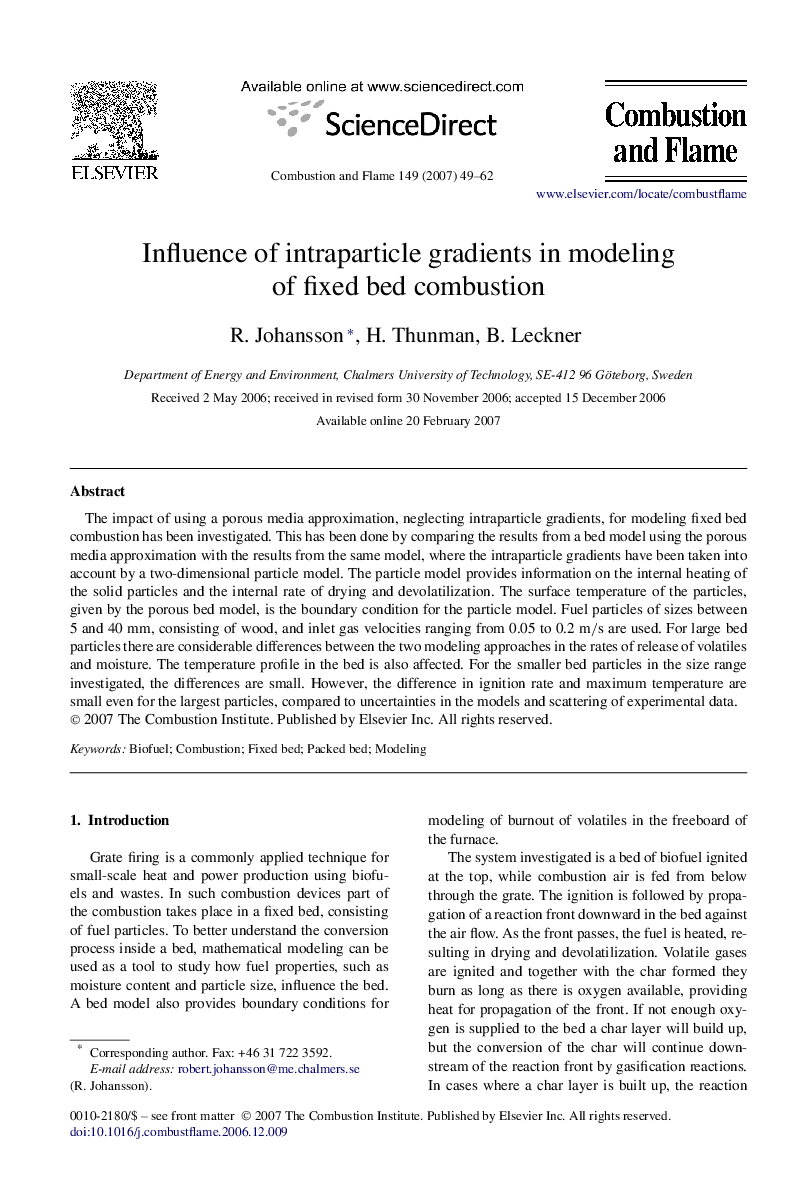| Article ID | Journal | Published Year | Pages | File Type |
|---|---|---|---|---|
| 168110 | Combustion and Flame | 2007 | 14 Pages |
The impact of using a porous media approximation, neglecting intraparticle gradients, for modeling fixed bed combustion has been investigated. This has been done by comparing the results from a bed model using the porous media approximation with the results from the same model, where the intraparticle gradients have been taken into account by a two-dimensional particle model. The particle model provides information on the internal heating of the solid particles and the internal rate of drying and devolatilization. The surface temperature of the particles, given by the porous bed model, is the boundary condition for the particle model. Fuel particles of sizes between 5 and 40 mm, consisting of wood, and inlet gas velocities ranging from 0.05 to 0.2 m/s are used. For large bed particles there are considerable differences between the two modeling approaches in the rates of release of volatiles and moisture. The temperature profile in the bed is also affected. For the smaller bed particles in the size range investigated, the differences are small. However, the difference in ignition rate and maximum temperature are small even for the largest particles, compared to uncertainties in the models and scattering of experimental data.
